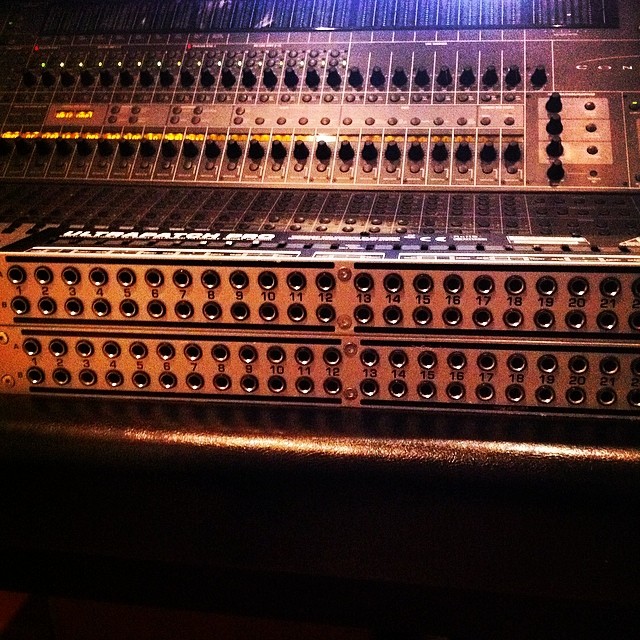Today is going to be a bit of a different blog article (at least for us). We obviously love talking about recording gear, particularly vintage audio gear, but while all the knobs and faders look so cool to our clients, they never have any idea what all the jacks are for on our patchbays. So let us explain what a patchbay is, and why we have so many of them.
A patchbay is essentially what is called a “jackfield”, and is an array of jacks. We use balanced TRS patchbays, but there are a variety of different types, including XLR, TR, and TT patchbays. The reason we use our balanced TRS patchbays is because they are more rugged, don’t deteriorate, can pass phantom power well, and XLR conversion is fairly simple. Patchbays come in all different sizes depending on the type of connection as well as the model and intended use, but the most common configuration is 48 jacks arranged in two rows of 24. You can see the front of the patchbay in the picture that was at the top of this article, but the back of the patchbay looks exactly the same, 48 TRS jacks.
That is the basic design of the patchbay, but how does it operate? The way patchbays are typically wired is everything you use in the studio is plugged into the back of the patchbay. The top row is for all of your inputs, and the bottom row is for all of your outputs. When a patchbay is in what is called “normalled” mode, the signal from the top back jack passed to the top bottom jack right below it unless something is plugged into the front of the patchbay. When something is patched into the front it breaks the signal and the audio now goes wherever I want it to. I can send it somewhere else before sending it back to the output. In this way, I can use all kinds of gear by just changing one or two cables on the front of the patchbay.
This might not seem like it is really that important, especially if you have ever recorded at home, but in a professional recording studio, things get a little more complicated. We have a lot of gear in our racks, we have so many preamps, and everything is wired to our console and to our interface, that if I had to go under the desk or behind the racks every time I wanted to use a different piece of gear, I’d have a really sore back, and our recording sessions would waste a lot of our client’s time. Having the patchbays easily accessible and with every piece of recording gear wired into it, we can record, mix, and master music through any piece of recording equipment with ergonomic ease.

